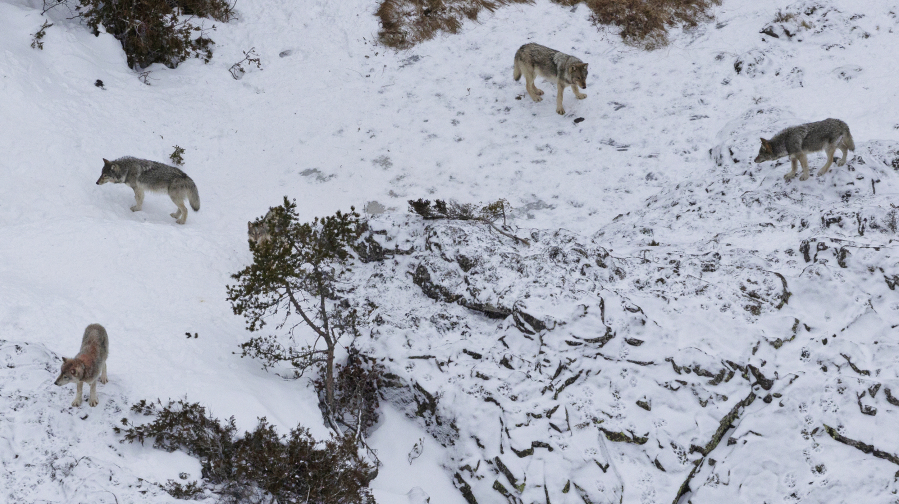TRAVERSE CITY, Mich. — Gray wolves are thriving at Isle Royale National Park five years after authorities began a last-ditch attempt to prevent the species from dying out on the Lake Superior island chain, scientists said Wednesday.
Meanwhile, the park’s moose population continues a sharp but needed decline. Overpopulation of the lumbering mammals were causing their own starvation as they outstripped available balsam fir trees — their primary food during long, snowbound winters, Michigan Technological University biologists said.
The trends appear to justify federal officials’ 2018 decision to airlift mainland wolves to Isle Royale, the researchers said, arguing that the predators’ return is helping rebalance an ecosystem knocked off-kilter as their number dropped to just two.
The scientists’ annual report, based largely on aerial observations last winter, estimated the rebuilt population at 31 wolves— up from 28 last year. It said the wolves appeared to be forming three packs, with others wandering alone or in smaller groups. The moose total was roughly 967, down from 1,346 last year and 54 percent decline from about 2,000 in 2019. Ecologists are celebrating what they hope will be a healthier herd.
“It’s been hugely successful,” said study co-leader Sarah Hoy, a research assistant professor and animal ecologist. “That’s what everyone was hoping for.”
But the early results haven’t settled a debate over whether people should rescue struggling species at Isle Royale or other designated wilderness areas, where federal law calls for letting nature take its course.
“We have felt and still believe that the National Park Service should not have intervened and set up this artificial population of wolves,” said Kevin Proescholdt, conservation director for the advocacy group Wilderness Watch.
Scientists believe the island’s first moose swam to Isle Royale around the turn of the 20th century. Wolves arrived in the late 1940s, apparently crossing the frozen lake surface from Minnesota or the Canadian province of Ontario. Though technically part of Michigan, that state’s shores are farther away.
Moose provided an ample food supply for the wolves, which in turn helped keep moose numbers in check. Both populations rose and fell over the years, influenced by disease, weather, parasites and other factors. But inbreeding finally took its toll on the wolves, whose numbers plummeted between 2011 and 2018.
Some experts said they should be allowed to die out, as have other species that once occupied the island, including Canada lynx and woodland caribou, which had the same predator-prey relationship as today’s wolves and moose.
“Species come and species go,” Proescholdt said, arguing that the federal Wilderness Act “directs us to let nature call the shots and not impose our human desires.”
Park officials and Michigan Tech scientists contend the absence of a top-of-the-food-chain predator of moose and beaver would have been ruinous for the island’s forest. Even now, its balsam firs continue to deteriorate from moose browsing and an attack of tree-killing spruce budworm, the report said.
Experts acknowledge the same factors that nearly wiped out the wolves — primarily inbreeding — eventually could return. Global warming is causing fewer ice bridges to form on Lake Superior, reducing the likelihood of wolves trekking from the mainland to the park and diversifying the gene pool. The sprawling archipelago’s closest point to the mainland is about 15 miles away.
That could mean park managers will need to import a few wolves every decade or so, Hoy said.
They brought in 19 wolves from Minnesota, Ontario’s Michipicoten Island and Michigan’s Upper Peninsula in 2018-19.



